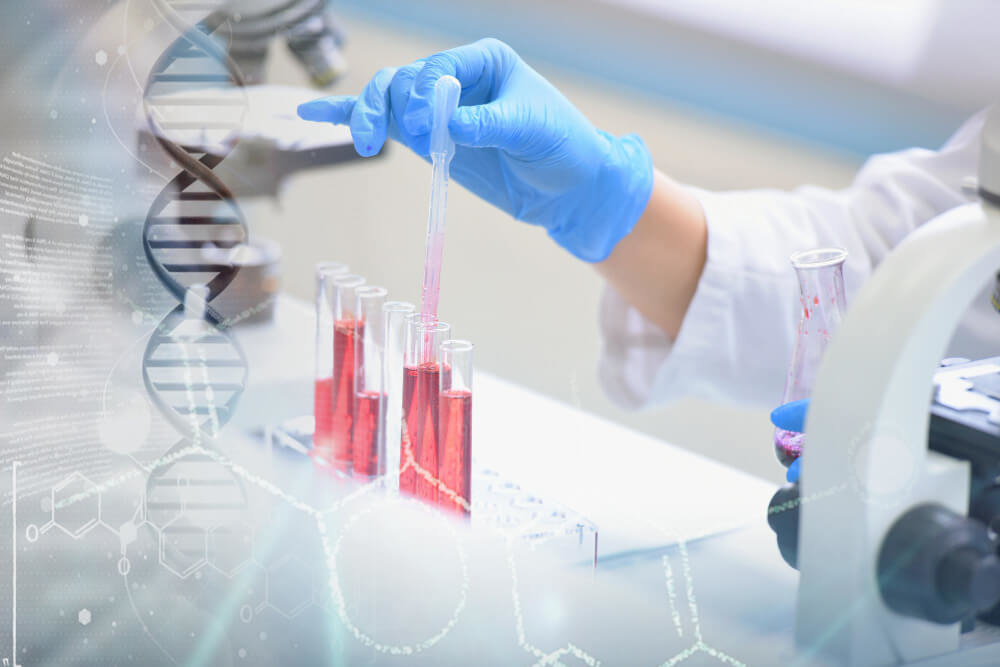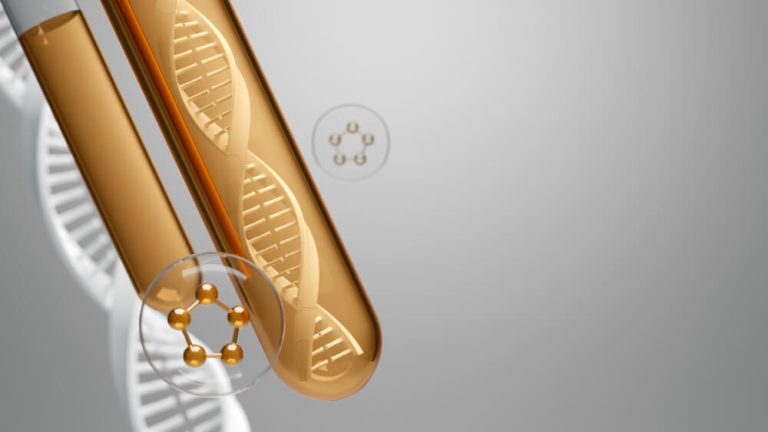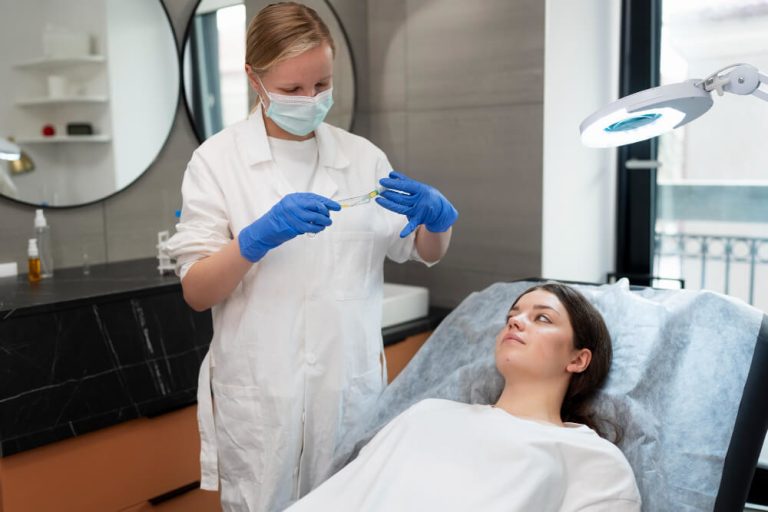The Regenerative Revolution: How Your Body’s Own Power is Redefining Medicine
Think about the last time you had a paper cut. You likely watched, over a few days, as your body performed a small miracle. The bleeding stopped, a scab formed, and new skin grew underneath, leaving little to no trace of the injury. This innate ability to heal is one of the most remarkable features of human biology. Now, imagine if we could harness and amplify that power to repair not just minor cuts, but damaged organs, worn-out joints, and tissues affected by disease.
This is the incredible promise of regenerative medicine. It represents a fundamental shift in healthcare, moving beyond simply managing symptoms to addressing the root causes of disease and injury. Instead of a pill to mask pain, this field offers the potential to rebuild the very tissue that is causing it. It is a proactive, restorative approach that aims to help the body heal itself from within.
The core idea is to deliver specific types of cells or cellular products to injured or diseased areas of the body to restore function. This exciting field of regenerative medicine is not a single treatment but a broad collection of cutting-edge technologies and therapeutic approaches. It is changing our understanding of what is possible in treating conditions that were once considered chronic or irreversible.

What Are the Core Principles of Regenerative Medicine?
At its heart, regenerative medicine operates on a simple yet profound principle: give the body the tools it needs to fix itself. Traditional medicine often focuses on external interventions, like surgery to remove damaged tissue or medications to control symptoms. Regenerative therapies, in contrast, work to stimulate the body’s own internal repair mechanisms.
To understand this, it helps to think of repairing a damaged structure, like an old brick wall. You need three key components. First, you need new bricks, or the fundamental building blocks. In the body, these are cells, particularly stem cells, which have the unique ability to develop into many different types of specialized cells.
Second, you need mortar and a framework to guide where the bricks should go. In regenerative medicine, this is accomplished with biomaterials or scaffolds. These are biocompatible structures that can be placed inside the body to provide a template, encouraging new tissue to grow in the correct shape and form.
Finally, you need a set of instructions telling the workers how to build the wall. These instructions come in the form of signaling molecules, such as growth factors. These are proteins that act as chemical messengers, directing cells to multiply, move to a specific area, and begin the work of repair and regeneration.

What Are the Main Types of Regenerative Therapies?
Regenerative medicine is not a one-size-fits-all solution. The field encompasses several distinct approaches, each tailored to address different types of cellular or tissue damage. These therapies can be used alone or in combination to achieve the best possible outcome for a patient. Understanding these primary methods provides a clearer picture of how this science is being put into practice.
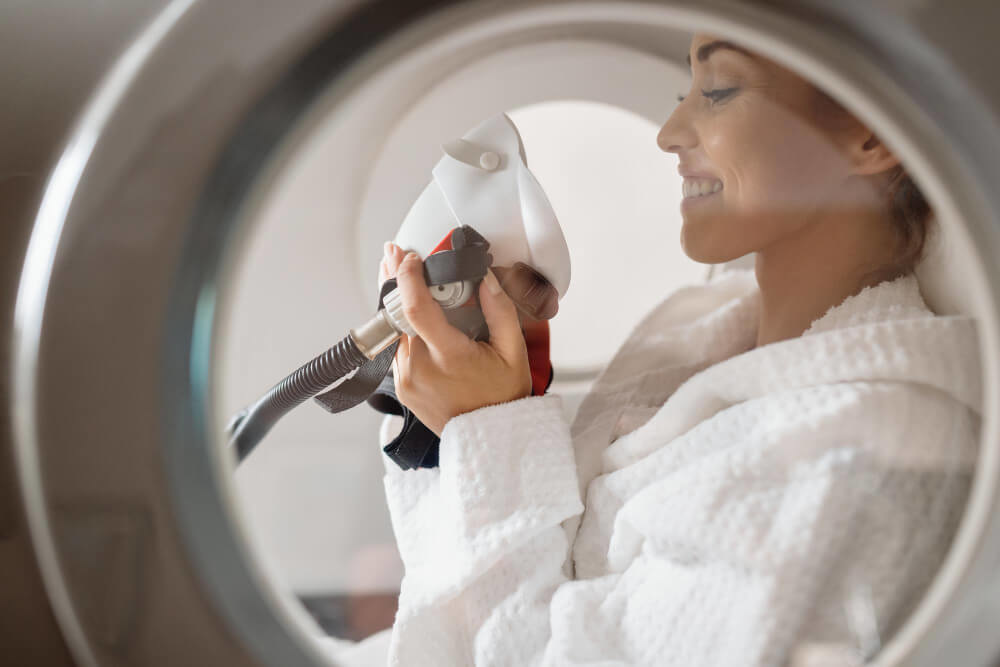
How Does Cell Therapy Work?
Cell therapy is perhaps the most well-known branch of regenerative medicine, largely due to the attention given to stem cells. Stem cells are the body’s raw materials. They are undifferentiated cells that can be prompted to become specific cells, such as muscle cells, blood cells, or cartilage cells. This remarkable versatility makes them a powerful tool for regeneration.
There are several types of stem cells used in medicine. Adult stem cells, which are found in tissues like bone marrow and fat, are multipotent, meaning they can develop into a limited range of cell types. Another source is perinatal stem cells, found in umbilical cord blood and tissue, which are collected at birth and possess powerful regenerative properties. These cells can be harvested, concentrated, and then reintroduced into the body at the site of injury.
Once administered, these cells work in several ways. They can reduce inflammation, which is a major barrier to healing. They also release growth factors that signal the patient’s own resident cells to get to work repairing the damage. In some cases, the hope is that these stem cells will directly differentiate into new tissue, replacing what has been lost.

What is Tissue Engineering?
Tissue engineering takes the concepts of regenerative medicine one step further. Instead of just injecting cells and hoping they do their job, this approach involves building functional tissues outside of the body for later implantation. It is a fascinating blend of biology, engineering, and materials science.
This process often begins with a scaffold, as mentioned earlier. This scaffold might be made from a synthetic biodegradable polymer or a natural material like collagen. It is designed to mimic the extracellular matrix of the tissue you want to grow, providing the necessary physical support and chemical cues for the cells.
Living cells, often the patient’s own, are then ‘seeded’ onto this scaffold in a nutrient-rich environment within a lab. Over time, the cells multiply and organize themselves into a three-dimensional tissue. As the new tissue matures, the scaffold gradually degrades, leaving behind a fully biological, functional replacement. This technique has already been used to grow skin for burn victims and cartilage for joint repair.

How Are Cellular Products and Platelet-Rich Plasma (PRP) Used?
Not all regenerative therapies involve live stem cells. Some of the most common and accessible treatments use cellular products derived from the patient’s own body. Platelet-Rich Plasma, or PRP, is a perfect example. This therapy leverages the healing power packed inside the platelets found in your blood.
To create PRP, a small sample of a patient’s blood is drawn and placed in a centrifuge. This device spins the blood at high speeds, separating it into its different components. The layer rich in platelets is isolated and collected. This concentrate, which contains 5 to 10 times the normal number of platelets, is then injected directly into the injured area.
Platelets are the body’s first responders to injury. When activated, they release a host of potent growth factors. These signaling proteins orchestrate the healing cascade, attracting stem cells, stimulating blood vessel formation, and promoting the growth of new tissue. PRP is widely used for orthopedic injuries, osteoarthritis, and even in aesthetics for skin rejuvenation and hair loss.

What Conditions Can Regenerative Medicine Potentially Treat?
While much of the field is still evolving, regenerative therapies are already being applied across a wide spectrum of medical disciplines. The potential applications are vast, offering hope for conditions that have long been challenging to treat effectively.
In orthopedics and sports medicine, regenerative treatments are used to address chronic pain and injury in joints, tendons, and ligaments. Conditions like osteoarthritis of the knee, rotator cuff tears, and tennis elbow are common targets. The goal is to repair the underlying tissue damage, reduce pain, and improve function, helping people avoid or delay major surgery.
Cardiology is another promising frontier. Researchers are exploring ways to use cell therapies to repair heart muscle damaged by a heart attack. A comprehensive approach that includes an advanced cardiovascular risk assessment in primary care can identify issues early, while future regenerative strategies may one day help restore function to a damaged heart.
Neurological disorders, such as spinal cord injury, Parkinson’s disease, and multiple sclerosis, represent a significant area of research. While clinical applications are still largely in the future, scientists are investigating how cell therapies might protect existing neurons from damage and promote new neural connections. The challenges are immense, but the potential to restore lost function is a powerful motivator for continued research.
Other applications include accelerating the healing of chronic wounds like diabetic foot ulcers, treating autoimmune diseases by modulating the immune system, and in aesthetic medicine to naturally rejuvenate aging skin. The versatility of these therapies is one of their most exciting aspects.

What Are the Challenges and Ethical Considerations?
As with any revolutionary medical field, regenerative medicine comes with its own set of challenges and important considerations. The excitement surrounding its potential must be balanced with a realistic understanding of its current limitations and the responsibilities that come with its practice.

Why Is Managing Patient Expectations So Important?
The promise of ‘rebuilding’ the body can create very high hopes. However, it is vital to remember that many of these therapies are still relatively new, and outcomes can vary significantly from person to person. Not every patient will experience a miraculous recovery, and some treatments may not work at all. This is why clear and honest communication is paramount.
Practitioners have a profound ethical duty to provide patients with a realistic picture of the potential benefits and risks. They must explain what the evidence shows, which treatments are well-established, and which are still considered experimental. Effectively being able to manage patient expectations in regenerative medicine is a critical skill that builds trust and ensures patients can make truly informed decisions about their care.

How is the Field Regulated?
Regulatory oversight is crucial for ensuring patient safety and the legitimacy of regenerative therapies. In the United States, the Food and Drug Administration (FDA) is the primary body responsible for regulating cell-based products. The regulatory framework is complex, depending on how the cells are sourced, processed, and used.
Unfortunately, the hype around stem cells has led to the rise of ‘stem cell clinics’ that market unproven and unregulated treatments directly to consumers. These clinics often make exaggerated claims and may pose significant health risks. It is essential for patients to seek care from qualified, reputable physicians and centers that adhere to strict scientific and ethical standards.

What about the Cost and Accessibility?
Another significant challenge is the cost of these advanced therapies. Because many regenerative treatments are still considered novel or investigational, they are often not covered by health insurance plans. This means patients typically have to pay out-of-pocket, which can make these promising treatments inaccessible for many.
This financial barrier is a major point of discussion within the medical community. Clinics and practitioners are actively looking for ways to make these therapies more affordable without compromising on quality or safety. Innovators are exploring new business models and pricing for regenerative services to help broaden access and bring the benefits of regenerative medicine to a larger patient population.

How Can I Learn More and Find Reputable Information?
Navigating the world of regenerative medicine can be daunting given the mix of solid science and marketing hype. For anyone interested in this field, whether as a patient or simply an enthusiast, relying on credible sources is key. Your first and most important resource should always be a qualified healthcare professional who can provide personalized advice.
Beyond your doctor, several organizations are dedicated to advancing the science and providing trustworthy information. Professional communities like RegMedNet offer a hub for news and expert opinions aimed at those working in the field. For deep-dive, patient-focused information on stem cell science, the International Society for Stem Cell Research provides excellent, non-commercial resources to help the public understand the state of the science.
For healthcare professionals or students who are inspired to enter this field, robust training is essential. Government bodies and academic institutions offer rigorous programs. For example, the National Institutes of Health offers extensive training resources to support the next generation of researchers. Similarly, prestigious institutions like the Mayo Clinic provide specialized education and training programs that set a high standard for clinical practice and research in regenerative biotherapeutics.

What Does the Future Hold for Regenerative Medicine?
The future of regenerative medicine is incredibly bright, with innovations on the horizon that sound like they are straight out of science fiction. Scientists are making rapid progress in 3D bioprinting, a technology that could one day allow for the creation of complex, fully functional organs on demand, potentially ending organ transplant waiting lists forever.
Personalized medicine is another area of explosive growth. Imagine using a small sample of your own skin cells, reprogramming them in a lab to become induced pluripotent stem cells (iPSCs), and then using those cells to grow replacement tissue that is a perfect genetic match for you. This could eliminate the risk of immune rejection and tailor treatments specifically to your body’s needs.
Combined with advanced gene-editing tools, the ability to correct genetic defects at the cellular level before growing new tissue could revolutionize how we treat inherited diseases. While there is still much work to be done, the trajectory is clear. Regenerative medicine is not just a fleeting trend; it is a foundational pillar of the future of healthcare.
This ongoing revolution promises a future where we do not just live longer, but live better, with a greater capacity to heal and restore our bodies throughout our lives. For the healthcare professionals reading this, inspired by the potential of regenerative medicine to transform patient outcomes, the journey to mastery begins with specialized knowledge and training.
Frequently Asked Questions

How do regenerative therapies differ from traditional treatments like medication for sexual dysfunction?
Traditional treatments, such as oral medications for erectile dysfunction, typically work by managing symptoms on a temporary basis. They often increase blood flow for a short period to enable sexual activity but do not address the root physiological cause of the problem. Regenerative therapies, in contrast, are designed to heal and repair the underlying issue, such as damaged blood vessels or nerve tissue, by harnessing the body’s own healing mechanisms.
The goal of regenerative approaches is to restore natural, spontaneous function over the long term, rather than providing a short-term fix. By stimulating tissue rejuvenation with treatments like PRP or shockwave therapy, patients may experience lasting improvements that reduce or even eliminate their dependence on pills. This focus on healing from within is the fundamental difference between regenerative medicine and conventional symptom management.
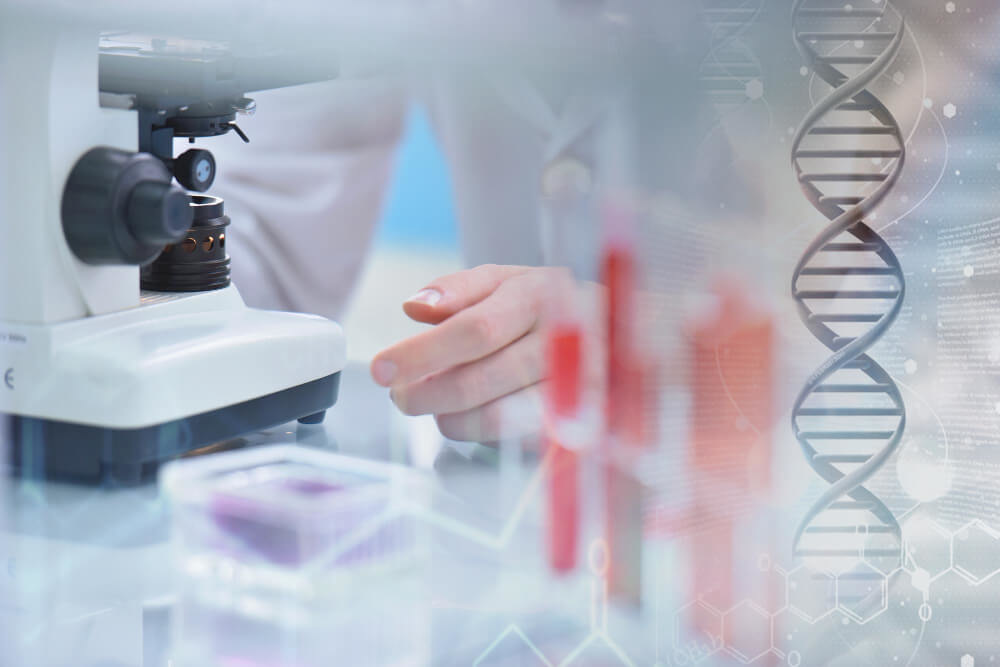
Are regenerative treatments for sexual health considered safe and are they FDA-approved?
Generally, these treatments carry a high safety profile because they are autologous, meaning they use cells and growth factors sourced from your own body. For instance, Platelet-Rich Plasma (PRP) therapy uses a concentration of your own blood platelets, which dramatically reduces the risk of allergic reactions or disease transmission. Since the procedures are minimally invasive, they also avoid the significant risks associated with major surgery.
It is critical to understand, however, that while the equipment used to prepare PRP may be FDA-cleared, the specific application for treating sexual dysfunction is largely considered investigational and is not yet officially FDA-approved. This means that while promising, these therapies are still being studied to establish standardized protocols and long-term efficacy. Patients should always seek treatment from a qualified provider who can discuss the current scientific evidence and regulatory status.

Who is an ideal candidate for regenerative approaches to sexual dysfunction?
An ideal candidate is typically a man or woman experiencing mild-to-moderate sexual dysfunction who seeks an alternative to conventional drugs or surgery. This includes individuals with conditions like erectile dysfunction caused by poor blood flow (vasculogenic ED) or women with concerns related to arousal, lubrication, or orgasm. Candidates should be in good overall health and have realistic expectations about the outcomes.
These therapies are often most effective for those whose issues are related to tissue health and blood supply, rather than purely psychological factors. Individuals with certain conditions, such as active infections, cancer in the treatment area, or specific blood disorders, may not be suitable candidates. A thorough medical evaluation and consultation with a specialist is necessary to determine if these innovative treatments are appropriate for you.
Discover the most comprehensive functional medicine training, longevity training, and biohacking certification programs designed specifically for healthcare professionals, medics, and clinic owners who want to master regenerative medicine protocols and anti-aging therapies.

